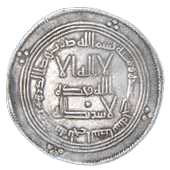Ali’s Life
Ali ibn Abi Talib ( May Allah be pleased with him) was the son-in-law and cousin of the Prophet Muhammad. He was one of the first to accept Islam which he did at the age of 10. Ali was known for his bravery and his commitment on the battlefield, being on the frontline at the battle of Badr and the battle of Uhud. He also married Fatima Zahra bint Muhammad ( May Allah be pleased with her) and raised his two sons Al-Hasan and Al-Husayn ( May Allah be pleased with him).
Ali’s Appearance
Ibn Abdul-Barr said “The best of what I have seen about the description of ‘Ali was that he was a medium stout man, looking slightly short, with a strong contrast between the dark pupil of his eyes and the whiteness around it, with a very handsome face as beautiful as the full moon…”1
Ali’s Appointment as Caliph
Ali’s ( May Allah be pleased with him) appointment was straightforward and happened fast, after Uthman’s ( May Allah be pleased with him) death the senior companions who fought at Badr came together and said that Ali is the most fitting successor for Uthman, thus most pledged allegiance to him straight away.2
Ali’s Caliphate
Due to Uthman’s murder, there was splitting of the muslims which was instigated by the Kharijite rebellion who stirred up animosity against Uthman and many other crimes throughout history. This proved a difficult task for Amir-al-Mu’mineen Ali who also had to deal with Uthman’s killers
The Battle of the Camel
The battle of the camel was a civil war between the muslims that only lasted for a few hours. Talhah and Zubair ( May Allah be pleased with them) wanted to punish Uthman’s killers immediately whilst Ali wanted to wait because he thought this would cause more turmoil amongst the muslims. So Talhah and Zubair went to consult Aisha ( May Allah be pleased with them) about this matter in Al-Basra, Ali also sent people out to Al-Basra to reconcile and everyone agreed with Ali’s decision. When the kharijites heard of this,3 they ambushed Al-Basra posing as Ali’s men. In the confusion, Talhah and Zubair thought that Ali had betrayed them which led to this battle
Battle of Siffin
The Battle of Siffin was another civil war that happened between Ali and Mu’awiyah ( May Allah be pleased with them) . After the battle of the camel, Ali called on Mu’awiyah the governor of Syria to pledge allegiance to him. However, he believed that allegiance couldnt be made since senior companions were scattered abroad. Furthermore, Mu’awiyah (May Allah be pleased with him) was angry that his Uthmans murderers had not been punished yet. Ali considered Mu’awiyah an outlaw because of his refusal and sent and army to Syria to confront him.
For two months, Ali went back and forth with Mu’awiyah pleading him to change his mind and reassuring him that Uthman’s killers would be brought to justice. After a failure to come to terms after a one months truce, both parties mobilized their armies. The fighting was intense for a week and took a toll on Mu’awiyah’s army, he then said holding the Quran ‘this is the book of God, let it decide between us’. Which Ali agreed to, they sent out two arbiters, Amr-ibn-as from Syria and Abu Musa al-Ashari from Iraq, who would issue a verdict. They both agreed that a final judgement will take place just before Ramadan. Both arbiters agreed that neither Ali and Mu’awiyah should be the Caliph and the Shura council would decide who’s next. Abu Musa al-Ash’ari announced that Ali would be removed and Amr decided that Mu’awiyah can stay as Governor of Syria.5
Tarikh al Dimashq records that when peace occurred between Ali and Mu’awiyah , Ali went out to his martyrs and said:‘They will be in Heaven.’Then he walked by the Martyrs of Mu’awiyah and said: ‘They will be in Heaven. Then the matter will be turned to me and Mu’awiyah and judgement will be by my side and Mu’awiyah will be forgiven. This is what my beloved Allah’s Messenger informed me.’6
The Kharijites Assault and Ali’s Murder
The Kharijities hated Ali’s decision of arbitration and started causing mayhem in the muslims land by killing civilians and looting places. Ali who himself rejected the arbitration, confronted the Kharijites with his army and had slayed most of them, this was known as the Battle of Nahrawan.
Around 2-3 years had passed, Ali was in the mosque waiting for prayer when Ibn Muljam, one of the leader of the Kharijites, came from behind and wounded Ali with a poisoned sword. Ibn Muljam was caught and was executed by Hasan ibn Ali ( May Allah be pleased with him) .7
Ali ( May Allah be pleased with him) died two days later from his wounds on the 19 Ramadan 40AH and was buried in Kufa,Iraq.
“You (Ali) are to me as Aaron was to Moses…”
References
- Islamweb (2016) Physical description of Rightly-Guided Caliphs, www.islamweb.net. Available at: https://www.islamweb.net/en/fatwa/327688/physical-description-of-rightly-guided-caliphs (Accessed: 24 March 2024). ↩︎
- Al Bouti, R. (2006) The jurisprudence of the prophetic biography :& A brief history of the Orthodox caliphate. Translated by N. Roberts. Damascus, Syria: Dar Al-Fikr, pp. 634-635. Availableat:https://archive.org/details/fiqhussunnahbyshaykhramadanalbuti_202003/page/n565/mode/2up?view=theater (Accessed: 11 February 2024) ↩︎
- Al Bouti, R. (2006) The jurisprudence of the prophetic biography :& A brief history of the Orthodox caliphate. Translated by N. Roberts. Damascus, Syria: Dar Al-Fikr, pp. 640-642. Availableat:https://archive.org/details/fiqhussunnahbyshaykhramadanalbuti_202003/page/n565/mode/2up?view=theater (Accessed: 11 February 2024) ↩︎
- Farid Responds (2021) ‘The Battle of al-Jamal (the Camel)’, www.youtube.com. Available at: https://youtu.be/bbpf_VANFAI?si=QD8lFHlBABOJ9WAU (Accessed: 10 March 2024). ↩︎
- Al Bouti, R. (2006) The jurisprudence of the prophetic biography : & A brief history of the Orthodox caliphate. Translated by N. Roberts. Damascus, Syria: Dar Al-Fikr, pp. 645-648. Available at: https://archive.org/details/fiqhussunnahbyshaykhramadanalbuti_202003/page/n565/mode/2up?view=theater (Accessed: 11 February 2024). ↩︎
- Baytalathar (2023) Instagram, www.instagram.com. Available at: https://www.instagram.com/p/CzrjvE8LBvq/?igsh=cnZ6MnN4YTc2bHhu (Accessed: 27 February 2024). ↩︎
- Al Bouti, R. (2006) The jurisprudence of the prophetic biography : & A brief history of the Orthodox caliphate. Translated by N. Roberts. Damascus, Syria: Dar Al-Fikr, pp. 649-50. Available at: https://archive.org/details/fiqhussunnahbyshaykhramadanalbuti_202003/page/n565/mode/2up?view=theater (Accessed: 11 February 2024). ↩︎
- Ibn Majah (2007) Sunan ibn Majah. Translated by N. Al-Khattab. Darussalam, p. 160. Available at: https://drive.google.com/drive/folders/11sApB-MWFA9ajkWyrsskkn0aW-YoB_an (Accessed: 17 February 2024). ↩︎


